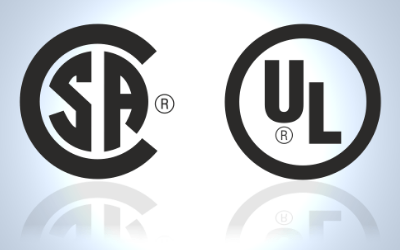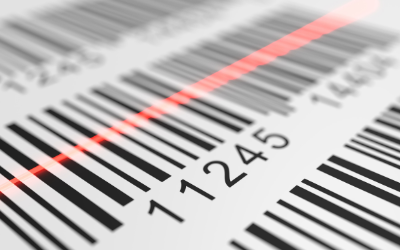Labels and decals are commonly used in a wide variety of industries to help enhance the appearance of a product, draw attention to detail, or warn an operator of any potential hazards that may be prevalent. They often contain images, instructions, descriptions, warnings, or identifications. Our team at Butler Technologies helps to create the perfect design for your specified needs.
We use a variety of substrates depending on your product’s requirements, such as vinyl, acrylic, polyester, or polycarbonate. We also offer our customers two different printing methods based on their needs: digitally printed or screen-printed labels and decals.
Design Considerations:
There are many different design considerations to take into account when creating a label or decal to meet your product’s requirements. Each of the design considerations will add to the overall effectiveness and accuracy of your label or decal design. Here are a few of the things you must consider when designing a label or decal:
Operating Environment
One of the first things an engineer will need to consider when designing your product is its operating environment. Operating environment refers to where you will primarily use the label or decal at. For example, will it be used indoors in a manufacturing facility or outdoors on machinery and equipment? It also refers to the temperatures that the label or decal will be exposed to.
Will the label or decal be exposed to extremely hot temperatures? If so, your product may need to be heat-resistant to help ensure the label or decal doesn’t warp or buckle. Another example of an operating environment that may require unique design considerations would be in a hospital setting. In this environment, the label would be subject to cleaning agents and other chemicals, so making the overlay chemical resistant would be beneficial.
Bar Codes
Often, labels need to be printed with a unique identifier or barcode. This is extremely common in settings where the end-user would like to track a product’s information. It is also commonly used for inventory management.
Barcodes are digitally printed and can be made with, or without serialization. If a barcode is not required, serialization can be printed by itself.
We can also make barcodes with human-readable serialization, or numbers under the barcode, so the end-user can manually punch in the item’s serial number. If a barcode needs to be incorporated into your label design, you should also bring this up during your label’s design stage.
Durability
As discussed previously, you must address the operating environment and industry you plan to use the overlay in during the design phase. It is common, especially in an industry such as safety, for a label or decal to be exposed to relatively harsh and dirty environments. Constant sterilization is also expected in the medical sector and must be taken into consideration.
Regardless of the industry you will use them in, these devices must last through the long period of wear and tear they will encounter. Our engineers have a wide range of inks and materials they can choose from when designing your label or decal to ensure its durability.
Security & Tamper-Evident
We have a variety of materials and substrates that can we can use for tamper-evident labels. An example of a tamper-evident label would be a “Void” embedded material. For this, we would print on the top surface, and if someone attempts to remove the label, the word VOID will remain on the subsurface, and the material will destruct and pull apart. We also have another destructible material that will fracture like shattered glass when someone attempts to remove it.
Tamper-evident labels are essential in several industries, especially within the medical field, where a product must be voided once tampered with.
Fine Line Circuit Security Labels
Another relatively new design consideration for labels and decals is to include hidden fine line circuitry, especially if you are designing your label or decal for tamper detection or antitheft purposes. Typically, security label design elements include a printed antenna that goes inside an NFC or RFID tag. Fine line circuitry can show any signs of tamper with the label or decal. If this is something you would be interested in, it should also be brought up during your label or decal’s design stage.
Standards and Approvals
For many industries, your labels and decals must meet certain standards and approvals, especially when designing the overlays for military applications.
Item Unique Identification Labels/Decals
Our team prints a variety of different decals and labels for unique military applications. We can print your IUID, otherwise known as your Item Unique Identification Labels/Decals. These custom designs contain a Unique Item Identifier in combination with a barcode. The barcode can include information a person can read for tracking purposes and can portray information such as a price, serial number, manufacturer’s name, device origin, history of repairs, or where you can find the product for inventory management.
CSA and UL Certified Labels
Our team at Butler Technologies is also familiar with CSA and UL-approved labels. If you only sell your product in the United States, then a UL certification will be sufficient, as it only pertains to U.S standards. However, if you sell your product worldwide, a CSA certificate would be more beneficial, as it has an advantage for international business and is recognized worldwide.

You must address several different design considerations before taking your labels and decals into production. Our team at Butler Technologies will work with you to ensure that the appropriate design elements are incorporated into your product based on the product’s end-use application. To get your next project started, or to learn more about our capabilities, reach out. Our team of engineers is readily available to help you every step of the way!
 Meet the Author: Jaclyn King
Meet the Author: Jaclyn King
Jaclyn is a Marketing Communications Specialist on the BTI Team. She serves as the Content Manager, where she primarily manages social media channels, SEO, Public Relations, and website development. To get to know more about Jaclyn, check her out on LinkedIn!
